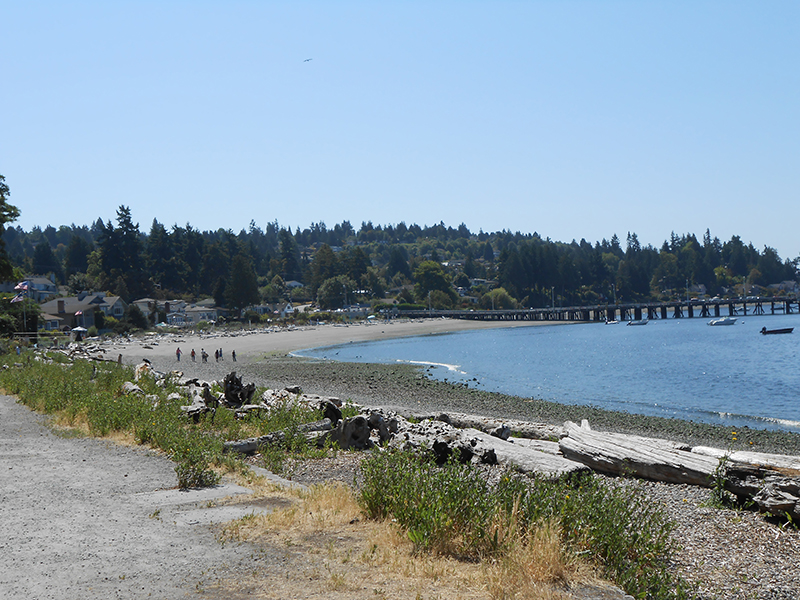
Curious to see how your favorite beach fared for water quality and healthy swimming last year? See the good, the bad, and the "poopy" marine swimming beaches in our BEACH Program 2020 Annual Report.
In this report, you can now see how beaches stacked up. You'll find the top swimming beaches for water quality by county and beaches that did not meet swimming standards last year.
Overall, 95% of beaches monitored in 2020 met the swimming criteria. This is a 4% increase from 2019. Freeland County Park, Arness County Park, and Little Squalicum Park had more than one sampling event in the advisory or closure range. For that reason, these three beaches were considered "not passing" beaches.
Why does it matter?
Anyone who uses marine beaches for recreational purposes like swimming, scuba diving, surfing or kayaking can be exposed to illness associated with water contaminated by sewage. Contact with fecal contaminated waters can results in gastroenteritis, skin rashes, upper respiratory infections, and other illnesses. Children and the elderly may be more vulnerable to waterborne illnesses.
How does poop get in the water?
Fecal bacteria get into the water in a number of ways. Some of it is natural, and a small amount of fecal bacteria does not pose a threat to public health.
Water at a beach can rise to an unhealthy level for many reasons. The most common reasons include:
- Septic tanks that are not properly maintained
- Large amounts of sewage discharged from sewers overflowing during heavy rain
- Sewage discharged by recreational boaters
- Wild animals congregating because people feed them
- Dogs pooping on beaches
- Used diapers left on the beach
How do I learn more?
We sample for fecal bacteria beginning the week of May 20 through Labor Day, Sept. 2. You can see which beaches have an advisory on our interactive Beach Closure and Advisory map during the swimming and sampling season. We encourage you to bookmark this map on your smartphone.

